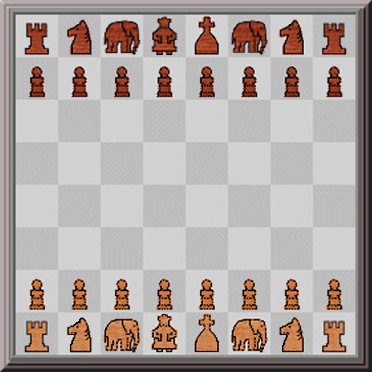|

“Arabs altered the name Chatrang which became Shatranj”
Shatranj is the name by which Chess was known from the seventh century of the first millennium. The King is allowed to move one cell in any direction and the Adviser, is also only allowed to move one cell diagonally in any direction.
The fil or, elephant moves two cells in any direction and is permitted to hop over any intervening piece.
The Faras moves in the same fashion as its traditional occidental counterpart.
The Rukh is the most powerful piece and has exactly the same motion as our modern equivalent.

Castling is not permitted as this double-move was introduced to Chess some eight hundred years after the introduction of Shatranj, in the 15th century. White may commence a game of Shatranj on Rank 1 and Rank 2 or on Rank 7 and Rank 8.
Shatranj has its own canon of names for openings etc, Goat Peg, Wonderful and Lovely, Pharaohs Fortress and the Sword opening being examples, which are called Tabia.
See dictionary under Shatranj for an in depth discussion and examples in the Chesmayne format.
In the 15th century the convention of allowing white to open was
introduced. The main difference between Shatranj and
traditional western Chess as we know it is that in
Shatranj a win can be achieved by taking all of your
adversary's pieces, except the King - you do not need to
force checkmate.
|